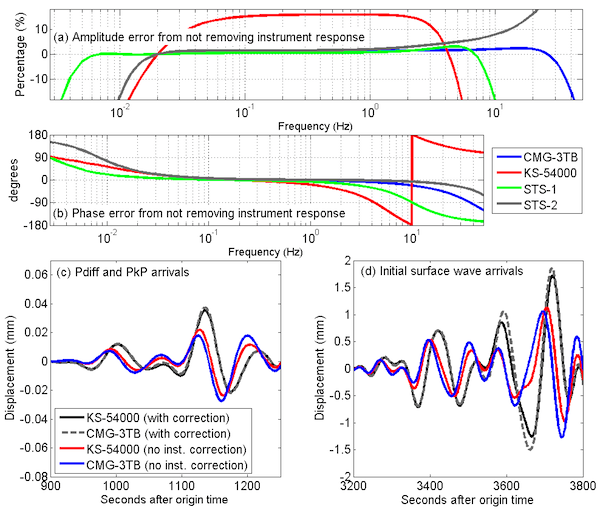2012 IRIS Workshop
The Importance of Removing Seismic Sensor Instrument Response
David Wilson: USGS Albuquerque Seismic Lab, Adam Ringler: USGS Albuquerque Seismic Lab, Tyler Storm: HTSI Albuquerque Seismic Lab, Bob Hutt: USGS Albuquerque Seismic Lab, Lind Gee: USGS Albuquerque Se
The top two panels show (a) amplitude and (b) phase errors as a function of frequency for four commonly used seismic sensors (response curves are normalized at 50s). The bottom two panels show data from the Apr. 11, 2012, Indian Ocean M8.6 earthquake, for (c) arriving body wave phases (Pdiff and PkP), and (d) first arriving surface waves as recorded at GSN station ANMO. Instrument response removal is required to match actual ground motion.

Full-resolution graphics file in original format: 0082.tif